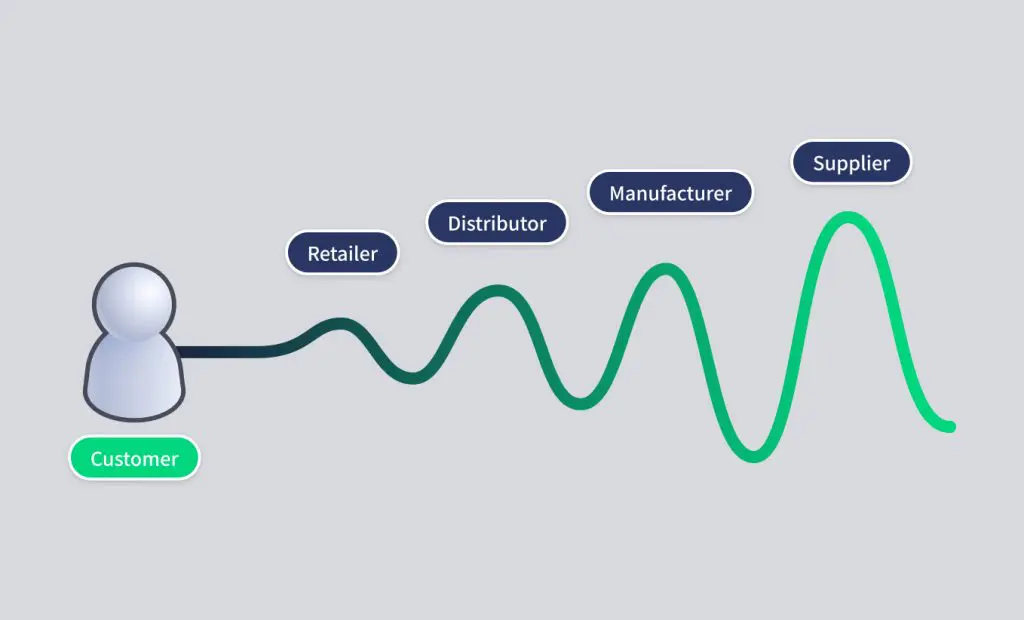Assortment planning is a key factor in modern retail success, driving market position, financial performance, and customer satisfaction. Through means of strategically selecting and managing inventory, retailers can optimise shelf space, reduce stockouts and excess inventory, and boost sales growth. This process goes beyond simple stocking—it involves data analysis, market research, and understanding consumer behaviour. Assortment planning’s significance lies in its ability to transform retail operations and enhance overall business performance.
What is Assortment Planning?
Assortment planning is a vital strategic process in retail that involves selecting the optimal mix of products across various categories, price points, and styles to meet customer demands while maximising profitability. It requires retailers to carefully decide which products to stock, in what quantities, and how to display them for maximum impact. Balancing variety with manageable inventory levels is key at this stage as assortment planning helps retailers optimise their inventory investments. Through data analysis, market trends, and understanding customer preferences, retailers can improve customer satisfaction, increase sales, enhance inventory turnover, and differentiate themselves from competitors. As retail evolves, especially with e-commerce and omnichannel growth, effective assortment planning is becoming increasingly complex and crucial for success.
Why is Assortment Planning Needed?
Assortment planning is essential in modern retail for enhancing customer satisfaction, boosting sales, and optimising inventory management. Curating a product mix that aligns with consumer preferences enables retailers to improve the shopping experience, foster customer loyalty, and increase repeat business. Informed by data analysis, assortment planning helps reduce stockouts, minimise excess inventory, and optimise pricing strategies, leading to higher profitability and inventory turnover. It also enables retailers to adapt quickly to market trends and allocate resources effectively. In an increasingly competitive market, where both online and offline options abound, assortment planning is a key differentiator that allows retailers to stand out. With advanced analytics and predictive tools, the process has become more precise, ensuring agile responses to demand shifts. Ultimately, assortment planning is fundamental to retail success, driving customer satisfaction, sales performance, and operational efficiency, especially in the evolving omnichannel landscape.
Your Business Deserves Smarter Decisions. Don’t wait for tomorrow to gain insights.
Explore Predictive Analytics Today!
When to Consider Assortment Planning?
Assortment planning should be an ongoing process, but certain scenarios make it especially crucial for retailers. Recognising these situations allows retailers to address potential challenges and optimise their product offerings. Key moments for focused assortment planning include times of market shifts, changes in consumer preferences, product launches, seasonal changes, or significant sales fluctuations. In these cases, effective assortment planning can help retailers adapt quickly, meet customer demand, and enhance overall profitability.
Uncontrolled SKU Proliferation
SKU proliferation occurs when a retailer’s product range expands rapidly without strategic oversight, leading to challenges such as complex inventory management, higher carrying costs, reduced shelf space for top-selling products, and customer confusion from too many choices. Assortment planning helps streamline product offerings by identifying and eliminating underperforming SKUs, consolidating similar products to reduce redundancy, and focusing on core products that drive sales and customer satisfaction. Moreover, it enables retailers to introduce new SKUs strategically based on market demand and complementary offerings.
Excessive Obsolete Inventory
Obsolete inventory consists of products that can no longer be sold at full price due to shifts in consumer preferences, seasonality, or their lifecycle. This can negatively affect profitability by tying up capital, occupying storage space, and requiring markdowns or write-offs. Effective assortment planning reduces obsolete inventory by improving demand forecasting, using just-in-time inventory strategies, balancing evergreen and trend-driven products, and implementing timely clearance strategies for slow-moving items.
Regular Stockouts
Frequent stockouts negatively impact customer satisfaction and sales by causing lost sales opportunities, reduced customer loyalty, and damage to brand reputation. Assortment planning helps prevent stockouts by analysing historical sales data to better predict demand, optimising inventory levels for high-demand products, implementing safety stock strategies, and improving supply chain coordination for timely replenishment.
Boost Sales, Minimise Stockouts
Insufficient Storage Space
Limited storage space can restrict a retailer’s ability to maintain optimal inventory, leading to missed sales opportunities, inefficient space use, and higher costs from frequent replenishment. Constructive assortment planning optimises storage by prioritising high-turnover items, implementing efficient storage systems, balancing bulky and compact products, and coordinating smaller, more frequent deliveries with suppliers. By adopting a strategic, data-driven approach to assortment planning, retailers can enhance operational efficiency, customer satisfaction, and profitability.
Key Components of Assortment Planning
Effective assortment planning is a complex process that requires a thorough and strategic approach. For retailers seeking to optimise product offerings and boost profitability, understanding and implementing its key components is essential. These critical elements form the foundation of successful assortment planning and play a pivotal role in aligning inventory with customer demand, market trends, and operational efficiency.
Market Analysis
Market analysis is the foundation of successful assortment planning, as it involves examining market trends, consumer behaviour, and the competitive landscape. This analysis helps retailers identify emerging trends, understand competitive positioning, and spot market gaps for new products. To conduct effective market analysis, retailers should use both quantitative and qualitative research, monitor social media for consumer insights, analyse competitors’ offerings and pricing, and stay informed through industry reports. Understanding these dynamics allows retailers to make informed decisions about their product assortment, aligning with current and future customer demands.
Customer Segmentation
Customer segmentation entails dividing a retailer’s customer base into distinct groups based on shared characteristics, allowing for a more tailored product assortment. This process helps retailers create targeted offerings, optimise pricing strategies, develop more effective marketing campaigns, and improve customer loyalty by addressing specific segment needs. Segmentation can be based on demographics, psychographics, behavioural patterns, and geographic location. A comprehensive understanding of these segments allows retailers to better cater to their core customers while attracting new groups.
Product Selection
Product selection is central to assortment planning, constitutes the choice of the right product mix based on data and strategic objectives. Key factors touch on performance metrics, alignment with brand identity and customer segments, complementarity with existing products, potential for cross-selling, and seasonality. Effective selection balances core products for consistent sales, trend-driven items for excitement, and unique products for differentiation. Retailers must also manage the depth (variants within a product line) and breadth (variety of product categories) to create a well-rounded assortment.
Inventory Management
Inventory management is crucial to ensuring the right products are available to customers in the correct quantities at the right time. It encapsulates demand forecasting, optimising stock levels, planning replenishment, and managing allocation across multi-store or omnichannel operations. Fruitful inventory management requires real-time tracking systems, advanced demand forecasting analytics, flexible supply chains, and processes for managing slow-moving inventory. Together with market analysis, customer segmentation, and product selection, inventory management forms a comprehensive framework for strategic assortment planning that adapts to changing market conditions and consumer preferences.
Steps in Assortment Planning Process
The assortment planning process is a structured approach that helps retailers create an optimal product mix. It entails several key steps to ensure a comprehensive, data-driven strategy. Measures targeted at following these steps empower retailers to make informed decisions that align with customer preferences, market trends, and business goals. Each step in the process contributes to crafting a well-balanced assortment that maximises sales and operational efficiency.
Setting Objectives
The first step in the assortment planning process is to define clear goals and objectives that align with the overall business strategy. This centres setting financial targets, such as sales growth and profit margins, establishing customer experience goals like improving satisfaction and loyalty, and outlining operational objectives such as inventory turnover rates and space utilisation. These objectives should be SMART—Specific, Measurable, Achievable, Relevant, and Time-bound.
Data Collection and Analysis
The next critical step in the assortment planning process is gathering and analysing relevant data to inform the strategy. Central at this point is collecting historical sales data such as sales volumes, profit margins, and seasonal trends; analysing market research on consumer preferences, industry trends, and competitor strategies; and evaluating operational data like inventory turnover, stockout rates, and space utilisation. Customer feedback from surveys, online reviews, and social media sentiment analysis is also key. Advanced analytics tools, like predictive modelling and machine learning, help derive actionable insights from this data, forming the foundation for effective assortment strategies.
Developing Assortment Strategies
Based on data analysis and set objectives, retailers can develop effective assortment strategies. Of importance are factors determining the optimal product mix, including the breadth and depth of each category and balancing core with trend-driven products, while identifying new product opportunities. Pricing strategies should align with target customer segments and include promotions for key products. Space allocation guides the decision-making process of how much space to give each category and optimising product placement. Localisation strategies tailored assortments to regional preferences and demographics. Omnichannel considerations ensure consistency across in-store and online offerings, including exclusive products. These strategies should remain flexible to adapt to market changes while staying aligned with business goals.
Implementation of Assortment Plan
After developing strategies, the next step is executing the assortment plan. At this juncture consider communicating the plan to relevant departments (merchandising, supply chain, store operations) and aligning with suppliers. Systems need to be updated with new product data, and staff trained on new products and processes. Merchandising plans, such as store layouts and promotional displays, are implemented. Coordination with suppliers involves placing orders and adjusting delivery schedules. Successful implementation requires clear communication, cross-department coordination, and attention to detail to ensure the plan is executed effectively.
Monitoring and Adjusting
The final step in the assortment planning process is continuous monitoring and adjustment. This revolves around regularly reviewing performance metrics such as sales data, inventory turnover, and customer feedback. Retailers compare actual results to objectives, identifying areas of over- or underperformance and analysing causes. Data-driven adjustments are made to the product mix, pricing, promotions, and inventory allocation. Retailers must also respond to market changes, adapting to new trends or competitive actions, and continuously improve by refining forecasting models and identifying best practices. Regular review cycles ensure the assortment plan remains dynamic, optimising product availability, sales, and operational efficiency.
Assortment Planning Strategies
Assortment planning strategies are approaches retailers use to determine the best product mix for their customers. These strategies vary depending on the retailer’s target market, business model, and goals. Let’s consider a few strategies:
Broad vs Deep Assortment
A key decision in assortment planning is whether to adopt a broad or deep assortment strategy, or a combination of both. A broad assortment offers a wide variety of product categories with limited options in each, appealing to customers looking for one-stop shopping and attracting diverse needs. However, it can lead to complex inventory management and lower profit margins. A deep assortment focuses on offering extensive options within specific categories, appealing to customers seeking specialisation and fostering loyalty, but it may have limited appeal across categories and higher inventory costs. Many retailers use a hybrid approach, offering deep assortments in core categories and broader options in complementary areas to balance customer appeal and inventory efficiency.
Seasonal Assortment Planning
Seasonal assortment planning is essential for retailers managing products with demand fluctuations throughout the year. This strategy involves identifying key seasons or events, forecasting demand based on data, planning the introduction and phase-out of seasonal items, and balancing these offerings with year-round core products. Success depends on accurate demand forecasting, flexible supply chains, strategic markdown planning for end-of-season stock, and considering the carry-over potential for unsold items. Retailers must also plan several months in advance to ensure timely product availability for seasonal demand.
Localised Assortment Planning
Localised assortment planning tailors product offerings to the unique needs and preferences of customers in different geographic locations. This strategy focuses on analysing local demographics, climate, and culture, customising the product mix, adjusting pricing and promotions, and considering local competition. Benefits include improved customer satisfaction, increased sales, and enhanced competitiveness. However, challenges include more complex inventory management, higher costs due to reduced economies of scale, and the need for advanced data analytics. Successful localised assortment planning balances standardised core products with customised local selections.
Mass-Market Assortment
A mass-market assortment strategy targets a broad customer base by offering widely appealing, high-volume products, often seen in large retailers and department stores. This approach focuses on popular items, competitive pricing, a mix of national brands and private labels, and products with broad demographic appeal. Advantages include high sales volumes, broad customer appeal, and simplified inventory management. However, it faces intense competition, challenges in differentiation, and limited appeal to niche markets. Success in this strategy requires operational efficiency, leveraging buying power for competitive pricing, and staying attuned to mainstream trends. Many retailers combine this with other strategies to align with their business objectives and market segments.
Assortment Planning Examples
To gain insight into how assortment planning strategies are utilised in practical situations, let’s examine some examples of various approaches.
Wide Assortment
A wide assortment strategy is exemplified by large department stores like Macy’s or Nordstrom, offering a broad range of product categories such as clothing, accessories, footwear, home goods, and beauty products. This strategy appeals to a diverse customer base, encourages cross-category shopping, and positions the store as a one-stop shopping destination. However, managing such a wide assortment requires advanced inventory systems and may present challenges in maintaining depth within each category.
Deep Assortment
Specialty retailers, like Best Buy, often use a deep assortment strategy, focusing on a specific product area while offering an extensive range within it. For example, Best Buy’s television selection includes multiple brands, sizes, technologies, price points, and related accessories. This approach positions the retailer as a category expert, attracts customers seeking specific or high-end products, and encourages in-store comparison shopping. However, managing inventory and keeping up with fast-evolving technology trends can be challenging.
Scrambled Assortment
A scrambled assortment involves offering products outside a store’s usual merchandise mix, as seen in drug stores like CVS or Walgreens. These stores offer prescription drugs, health and beauty products, groceries, seasonal items, photo services, and basic electronics. The advantages include boosting impulse purchases, differentiating from competitors, and meeting diverse customer needs, which increases store visits. The challenge lies in maintaining expertise and operational efficiency across varied product categories.
Localised Assortment
Walmart exemplifies localised assortment planning by maintaining a core product range while tailoring specific items to local preferences. For instance, a Miami store might offer more Hispanic foods, year-round beach items, and lighter clothing, while a rural Minnesota store could stock hunting gear, heavy winter clothing, and local sports merchandise. This approach helps Walmart better meet community needs, increase customer loyalty, and optimise sales potential. However, managing varied assortments across many locations adds complexity to operations.
Mass-Market Assortment
Target exemplifies a mass-market assortment strategy by offering trendy, affordable products that appeal to a broad demographic. Their assortment includes a mix of national brands and private labels, designer collaborations, and essential items across categories like clothing, home goods, and electronics. This strategy attracts a wide customer base, enables competitive pricing through high-volume purchasing, and simplifies inventory management by focusing on high-turnover products. However, the challenge lies in differentiating from other mass-market retailers while maintaining value and competitive pricing. Retailers often combine various assortment strategies to suit their market, product categories, and business goals.
Assortment Planning Optimisation
Enhancing assortment planning is vital for retailers to boost sales, profitability, and customer satisfaction. This encompasses consistently refining the product selection through data analysis, market trends, and customer insights. Here are some key strategies for optimising assortment planning:
Finding the Right Balance between Evergreen and Seasonal Products
Achieving the right balance between evergreen (year-round) and seasonal products is key to maintaining steady sales while capitalising on seasonal demand. Central factors highlight identifying consistently high-performing evergreen items, strategically introducing seasonal products based on trend forecasts, and allocating space and resources effectively. Retailers should manage inventory flow with just-in-time practices for seasonal items and have strategies for transitioning unsold stock. Regular performance analysis of both product types allows for continual refinement. This balance helps retailers ensure stable revenue from evergreen items while maximising seasonal sales and customer engagement.
Leveraging Cross-Merchandising
Cross-merchandising enhances product visibility and drives additional sales by placing complementary products together to encourage multi-item purchases. To optimise this technique, retailers should identify complementary product pairs through purchase data, create themed displays, position impulse items strategically in high-traffic areas, and implement suggestive selling techniques using staff or signage. Monitoring performance and adjusting based on data is crucial. Effective cross-merchandising can increase average transaction value, broaden product exposure, and boost customer satisfaction and loyalty.
Understanding Omnichannel Market Trends
Adapting to omnichannel market trends is vital for effective assortment planning in today’s retail landscape. Retailers must analyse purchasing behaviours across online and in-store channels, ensure consistent product offerings, and create channel-specific exclusives. Integrating data from all touchpoints, adapting to changing consumer expectations (like BOPIS), and leveraging technology for seamless experiences are key strategies. Optimising inventory allocation through flexible systems and predictive analytics is also crucial. By aligning with omnichannel trends, retailers can provide a cohesive and satisfying shopping experience across all platforms.
Optimising Localisation Efforts
Optimising localisation in assortment planning tailors product offerings to regional preferences and demands. Key strategies include conducting thorough market research, implementing flexible planograms, utilising advanced analytics for local demand patterns, collaborating with local suppliers, personalising marketing efforts, and continuously monitoring performance. These efforts help retailers increase relevance to local customers, improve inventory turnover, and enhance customer satisfaction.
Updating Assortment Planning Technology
Staying up-to-date with advanced technology is essential for effective assortment planning in today’s retail environment. Key strategies include using AI and machine learning for accurate demand forecasting, adopting cloud-based solutions for real-time collaboration, and integrating IoT devices for precise inventory tracking and in-store behaviour analysis. Retailers can also leverage augmented reality (AR) for virtual product layout testing, implement automated replenishment systems to adjust stock levels automatically, and use digital twin technology to simulate store scenarios. These technologies improve the accuracy, efficiency, and overall performance of assortment planning.
Challenges in Assortment Planning
Assortment planning is vital for retail success, but it presents several challenges that need to be addressed for effective implementation. Below are some common challenges that characterise assortment planning.
Demand Forecasting
Accurate demand forecasting is a major challenge in assortment planning due to factors such as changing consumer preferences, external influences like economic conditions and weather, difficulties in predicting demand for new products, long lead times for inventory decisions, and seasonal demand fluctuations. To overcome these challenges, retailers can invest in advanced forecasting tools, incorporate external data, implement agile supply chains, use collaborative forecasting with suppliers, and regularly adjust forecasts based on real-time data and trends.
Managing Supplier Relationships
Effective assortment planning depends on strong supplier relationships, but managing these can be challenging. Retailers must balance multiple suppliers, ensure consistent product quality, negotiate favourable terms, overcome communication barriers, and align supplier capacities with demand forecasts. Addressing these setbacks require retailers to use supplier relationship management (SRM) systems, establish clear quality standards with regular audits, build long-term partnerships for better terms, leverage technology for real-time communication, and diversify their supplier base to reduce dependency.
Balancing Variety and Complexity
Balancing a wide product variety with operational complexity is a key challenge in assortment planning. Issues include SKU proliferation, which can complicate inventory management, increased operational complexity, resource allocation challenges, sales cannibalisation, and maintaining brand identity. These challenges can be mitigated by retailers conducting SKU rationalisation to remove underperforming products, implementing category management strategies, using data analytics to find the optimal variety, establishing clear criteria for new product introductions, and utilising modular merchandising. Effective assortment planning requires advanced technology, skilled personnel, and continuous monitoring to adapt to the dynamic retail environment.
Technologies and Tools for Assortment Planning
In today’s retail landscape, utilising advanced technologies and tools is essential for successful assortment planning. These technologies enable retailers to make data-driven decisions, enhance forecasting accuracy, and simplify the planning process. Here are some key technologies and tools commonly used in assortment planning:
Assortment Planning Software
Assortment planning software helps retailers optimise their product mix by offering features like centralised planning, historical data analysis, forecasting, scenario modelling, visual merchandising tools, and integration with other systems. The benefits include improved decision-making accuracy, increased planning efficiency, better alignment with business strategies, and enhanced responsiveness to market changes. When choosing software, retailers should consider factors such as scalability, ease of use, integration with existing systems, and customisation options.
Data Analytics and Business Intelligence
Data analytics and business intelligence tools are vital in modern assortment planning, enabling retailers to make informed decisions from vast data sets. Tools like big data analytics, predictive analytics, customer segmentation, market basket analysis, sentiment analysis, and competitive intelligence help retailers forecast demand, understand customer preferences, and identify trends. These tools lead to more accurate forecasting, improved customer insights, better inventory management, and fewer stockouts. To maximise their effectiveness, retailers must ensure they have high-quality data and skilled staff to interpret the analytics.
Machine Learning and AI in Assortment Planning
Machine Learning (ML) and Artificial Intelligence (AI) are transforming assortment planning by improving accuracy and efficiency. Key applications include demand forecasting, dynamic pricing, personalised recommendations, inventory optimisation, trend prediction, and image recognition for visual merchandising. The benefits of ML and AI include more accurate demand forecasting, quick data analysis, continuous model improvements, and reduced human bias. However, implementing these technologies requires significant investment in technology, skilled personnel, and robust data governance. Successful assortment planning combines these advanced tools with human expertise for optimal decision-making.
Best Practices in Assortment Planning
For successful assortment planning, retailers should follow key best practices. These approaches enable them to develop a well-balanced and profitable product mix that satisfies customer demands while optimising inventory and operational efficiency. Glean some essential best practices to consider in assortment planning:
Regular Review and Update
A key best practice in assortment planning is regularly reviewing and updating the product assortment to keep it aligned with market trends and customer preferences. This constitutes setting a regular review schedule (quarterly or more frequently for fast-moving categories), analysing performance metrics like sales and inventory turnover, staying informed on market trends, and gathering feedback from staff and customers. Retailers should also be prepared to swiftly phase out underperforming items and introduce new products, while documenting decisions for future planning. This practice helps retailers stay agile and maintain a relevant, customer-aligned product mix.
Collaboration Across Departments
Effective assortment planning requires collaboration among various departments to ensure well-rounded decision-making. Best practices include forming cross-functional teams from merchandising, marketing, finance, and operations, aligning assortment plans with overall business strategy, coordinating with supply chain teams for feasibility, and integrating marketing efforts. Input from store operations, use of collaborative planning tools, and regular cross-department meetings are also crucial for seamless communication. This collaborative approach ensures assortment plans are comprehensive and aligned with all aspects of the business.
Customer Feedback Integration
Integrating customer feedback into assortment planning is vital for aligning the product mix with customer preferences. Key strategies consist of using surveys, focus groups, and social media listening for feedback, analysing purchase and return data, engaging with sales staff for direct insights, and leveraging customer service inquiries. Retailers can also implement A/B testing for different assortments and create feedback loops to act on customer input quickly. Personalising assortments based on customer data enhances relevance. This customer-centric approach boosts satisfaction, loyalty, and sales, making assortment planning more dynamic, responsive, and effective in meeting market demands.
Assortment Planning in Retail Industry
Assortment planning in retail requires a tailored approach that considers sector-specific strategies, regional variations, and the growing importance of e-commerce. Electronics retailers need to stay current with technological advancements, and home improvement stores must balance seasonal items with year-round essentials. Regional variations such as climate, cultural preferences, and economic conditions further shape assortment decisions. E-commerce integration plays a crucial role, offering extended aisles, online-exclusive items, and ensuring omnichannel consistency. Retailers should also use data-driven decision-making, real-time inventory tracking, and consider sustainability by incorporating eco-friendly products. Personalisation, leveraging customer data and dynamic pricing, enhances the customer experience. By addressing these factors, retailers can create effective assortment plans tailored to industry needs, regional markets, and multichannel operations.
Enhancing and Assortment Planning Strategy
To maintain a competitive edge in the rapidly shifting retail landscape, it’s essential to consistently evolve and sharpen your assortment planning strategies. Consider focusing on these critical areas for improvement:
Geographic Considerations
Tailoring assortments to local preferences is key to boosting sales and customer satisfaction. Retailers should conduct market research, analyse geographic data, and use advanced analytics to understand regional product demands. Implementing flexible store layouts, collaborating with local experts, and considering climate and seasonality further refines assortment strategies. Extensive focus on these factors empowers retailers to create more relevant and appealing assortments tailored to each location’s unique needs.
Seasonal vs Evergreen Product Assortments
Striking the right balance between seasonal and evergreen products is key to ensuring steady sales while seizing seasonal opportunities. Successful execution of this constitutes efforts to identify core evergreen items by analysing historical data, ensuring they are always in stock and visible. Seasonal assortments should be strategically planned, using trend forecasts and a well-timed introduction and phase-out schedule. Flexible inventory management, like just-in-time practices, helps minimise excess stock, while strategies for unsold items, such as markdowns, smooth transitions. Incorporating transitional products that bridge seasons further reduces sales fluctuations. Leveraging predictive analytics enhances demand forecasting, and climate change considerations allow retailers to adapt to shifting weather patterns. This balanced approach enables retailers to maintain consistent sales year-round while capitalising on seasonal peaks.
Cross-Merchandising
Effective cross-merchandising can greatly enhance sales and elevate the customer experience. Through measures aimed at analysing purchase data, retailers can identify frequently bought-together items and use this insight to inform product placement and bundling strategies. Grouping complementary products based on customer needs and creating themed displays makes shopping intuitive and engaging. Suggestive selling, through trained staff or signage, further encourages customers to explore pairings. Optimising store layouts by placing related items near each other, especially in high-traffic areas, maximises add-on purchases. Technology, such as recommendation engines and in-store mobile guides, can personalise the shopping experience even further. Regularly testing and refining these strategies ensures ongoing effectiveness. By enhancing cross-merchandising efforts, retailers can boost transaction value, introduce customers to new product categories, and create a more enjoyable, seamless shopping experience.
Future Trends in Assortment Planning
As the retail landscape continues to evolve, so must assortment planning, adapting to new technologies, shifting consumer behaviours, and market dynamics. The future of assortment planning will be shaped by key trends such as hyper-personalisation, where AI and machine learning create tailored product recommendations and dynamic pricing. Real-time data utilisation will enable instant inventory tracking and adaptive assortments, while sustainable planning will see a growing focus on eco-friendly products, supported by blockchain for transparency.
Retailers will embrace AI-driven trend forecasting, predicting emerging trends through social media and predictive analytics, while virtual and augmented reality transform both store design and shopping experiences. The rise of voice-activated shopping and micro-segmentation will push for more specific, niche product assortments, and omnichannel integration will ensure seamless experiences across all shopping platforms.
Technologies like predictive inventory management and collaborative planning will optimise supply chains and deepen partnerships with suppliers and customers. Retailers will incorporate experiential retail and localization at scale, enhancing in-store events and creating hyper-localised assortments with AI. Finally, ethical assortments and subscription-based models will cater to values-driven consumers and the growing demand for curated offerings.
As these trends reshape the retail landscape, retailers must stay agile, leveraging data, AI, and sustainability to craft innovative, future-ready assortment strategies. Those who embrace these changes will thrive in an increasingly competitive market.
Optimise Today, Plan for Tomorrow






